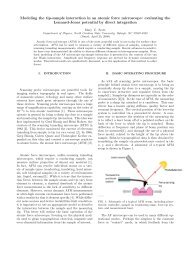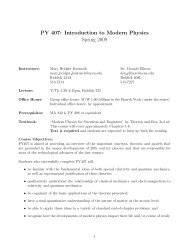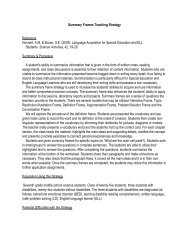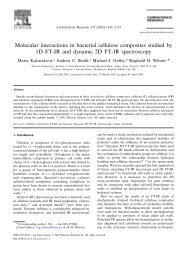Gorilla Warfare
Gorilla Warfare
Gorilla Warfare
Create successful ePaper yourself
Turn your PDF publications into a flip-book with our unique Google optimized e-Paper software.
aspora, with an estimated 13,000 pounds ofbushmeat-much of<br />
it primates-arriving every month in seven European and North<br />
American cities alone. "Hunting and trade have already resulted<br />
in widespread local extinctions in Asia and West Africa;' says<br />
Bennett. "Theworld's wild places are falling silent:'<br />
When a company wins a logging or mining concession, it immediately<br />
builds roads wide enough for massive trucks where the<br />
principal access routes had been dirt paths no wider than a jaguar.<br />
"Almost no tropical forests remain across Africa and Asia which<br />
are not penetrated by logging or other roads;' says Bennett.<br />
Hunters and weapons follow, she notes, "and wildlife flows cheaply<br />
and rapidly down to distant towns where it is either sold directly<br />
or links in to global markets." How quickly can opening a forest<br />
ravage the resident wildlife? Three weeks after a logging company<br />
opened up one Congo forest, the density ofanimals fell more than<br />
25 percent; a year after a logging road went into forest areas in<br />
Sarawak, Malaysia, in 2001, not a single large mammal remained.<br />
A big reason why hunting used to pale next to habitat destruction<br />
is that as recently as the 1990s animals were killed mostly for<br />
subsistence, with locals taking orily what they needed to live.<br />
Governments and conservation groups helped reduce even that<br />
through innovative programs giving locals an economic stake in<br />
the preservation of forests and the survival of wildlife. In the<br />
mountains ofRwanda, for instance, tourists pay $500 to spend<br />
an hour with the majestic mountain gorillas, bolstering the economy<br />
ofthe surrounding region. But recent years have brought a<br />
more dangerous kind of hunter, and not only because they use<br />
AK-47s and even land mines to hunt.<br />
The problem now is that hunting, even ofsupposedly protected<br />
animals, is a global, multimillion-dollar business. Eating<br />
bushmeat "is now a status symbol;' says Thomas Brooks ofConservation<br />
International. "It's not a subsistence issue. It's not a<br />
poverty issue. It's considered supersexy to eat bushmeat." Exact<br />
figures are hard to come by, but what conservation groups know<br />
about is sobering. Every year a single province in Laos exports<br />
$3.6 million worth of wildlife, including pangolins, cats, bears<br />
and primates. In Sumatra, about 51 tigers were killed each year<br />
between 1998 and 2002; there are currently an estimated 350<br />
tigers left on the island (down from 1,000 or so in the 1980s) and<br />
fewer than 5,000 in the world.<br />
Ifa wild population is large enough, it can withstand hunting.<br />
Butfor many species that "if" has not existed for decades. As a result,<br />
hunting in Kilum-Ijim, Cameroon, has pushed local elephants,<br />
buffalo, bushbuck, chimpanzees, leopards and lions to<br />
the brink of extinction. The common hippopotamus, which in<br />
1996 was classified as of "least concern" because its numbers<br />
seemed to be healthy, is now "vulnerable": over the past 10 years<br />
its numbers have fallen as much as 20 percent, largely because the<br />
hippos are illegally hunted for meat and ivory. Pygmy hippos,<br />
classified as "vulnerable" in 2000, by lastyear had become endangered,<br />
at risk of going extinct. Logging has allowed bushmeat<br />
hunters to reach the West African forests where the hippos live;<br />
fewer than 3,000 remain.<br />
Setting aside parks and other conservation areas is only as<br />
good as local enforcement. "Halfofthe major protected areas in<br />
Southeast Asia have lost at least one species of large mammal<br />
due to hunting, and most have lost many more;' says Bennett.<br />
In Thailand's Doi Inthanon and Doi Suthep National Parks, for<br />
instance, elephants, tigers and wild cattle have been hunted<br />
into oblivion, as has been every primate and hornbill in<br />
Sarawak's Kubah National Park. The world-famous Project<br />
Tiger site in India's Sariska National Park has no tigers, biologists<br />
announced in 2005. Governments cannot afford to pay as<br />
many rangers as are needed to patrol huge regions, and corruption<br />
is rife. The result is "empty-forest syndrome": majestic<br />
landscapes where flora and small fauna thrive, butwhere larger<br />
wildlife has been hunted out.<br />
Which is not to say the situation is hopeless. With governments<br />
and conservationists recognizing the extinction threat<br />
posed by logging and mining, they are taking steps to ensure that<br />
animals do not come out along with the wood and minerals. In<br />
one collaboration, the government ofCongo and the WCS work<br />
with a Swiss company, Congolaise Industrielle des<br />
Bois-which has a logging concession near Nouabale<br />
Ndoki National Park-to ensure that employees and<br />
their families hunt only for their own food needs; the<br />
company also makes sure that bushmeat does not get<br />
stowed away on logging trucks as illegal hunters try to take<br />
their haul to market. Despite the logging, gorillas, chimps,<br />
forest elephants and bongos are thriving in the park.<br />
Anyone who thrills at the sight ofman'S distant cousins<br />
staring silently through the bush can only hope thatthe executions<br />
ofVirunga's gorillas is an aberration. At the end of the<br />
week, UNESCO announced that it was sending a team to investigate<br />
the slaughter.<br />
With SCOTT JOHNSON in Virunga Park and JULIE SCElFO in New York<br />
AUGUST 6. 2007 NEWSWEEK 23










